It’s important to plant your strawberries in the right place.
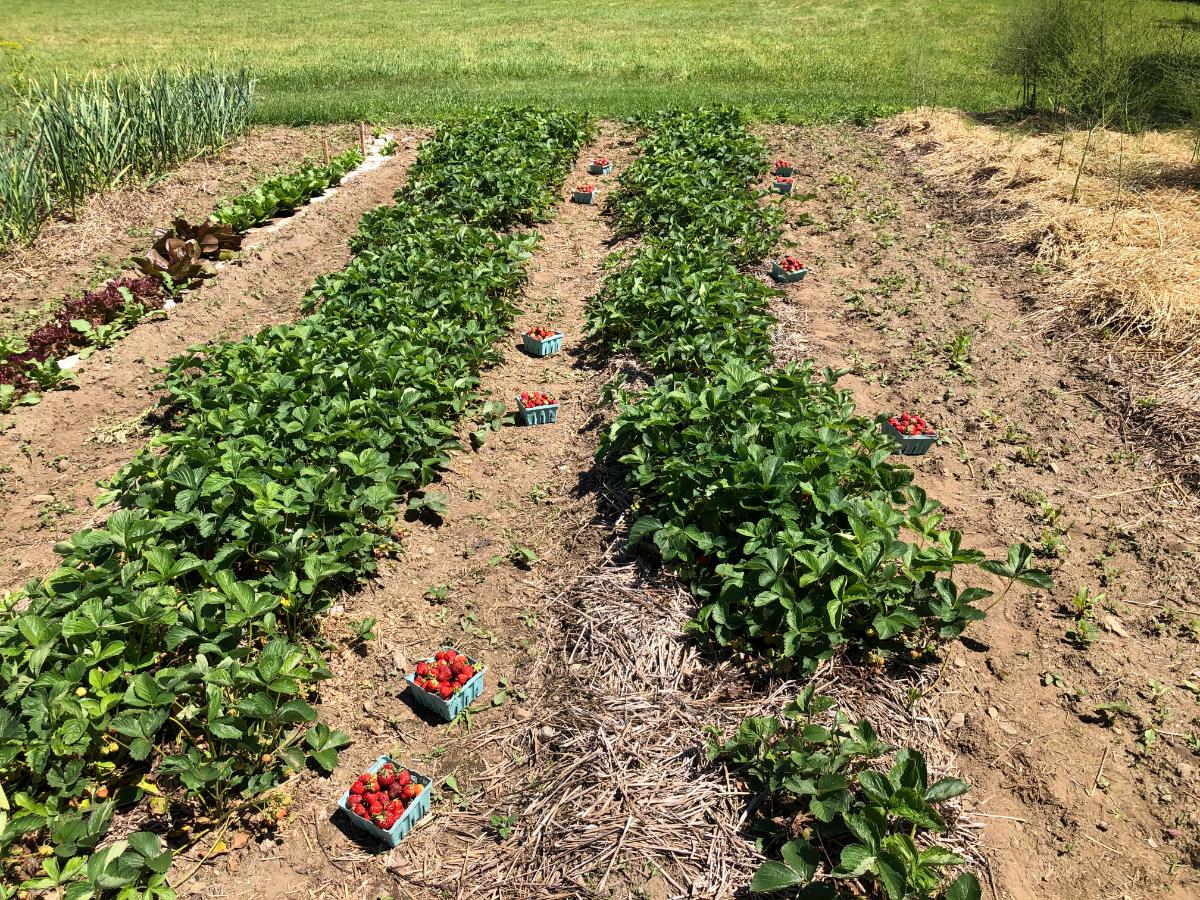
If strawberries are planted in the wrong space or the wrong soil, they will fail to thrive. The plants themselves will struggle and grow thin and spindly. You’re apt to get very small and very few berries if you get any at all.
Strawberries that aren’t given a place where they can grow and access all that they need will be the most vulnerable to cold, pests, and diseases. In fact, poor placement could set the stage for higher pest pressure.
Jump to:
- 11 Places NOT to Plant Your Strawberry Patch
- 1. In partial sun, filtered, or full shade
- 2. Away from shade-casting buildings or structures
- 3. Away from shade-casting trees
- 4. Outside the root or drip zone of neighboring trees
- 5. Not in poorly draining soils
- 6. Not where the soil stays wet for a long time into the spring
- 7. Not where standing water puddles after storms
- 8. Not on low ground if you can avoid it
- 9. Not where nightshade plants were planted within the last four years
- 10. Not where grass or sod was recently plowed under
- 11. Not where you can’t get water to the strawberry bed
- Pick the Place that’s Best for Your Berries
11 Places NOT to Plant Your Strawberry Patch
While a lot is said about where you should plant your strawberries, let’s look at some places and spaces that would be wrong for a thriving strawberry patch.
Here are the places you should avoid when choosing where to plant your strawberry plants:
1. In partial sun, filtered, or full shade
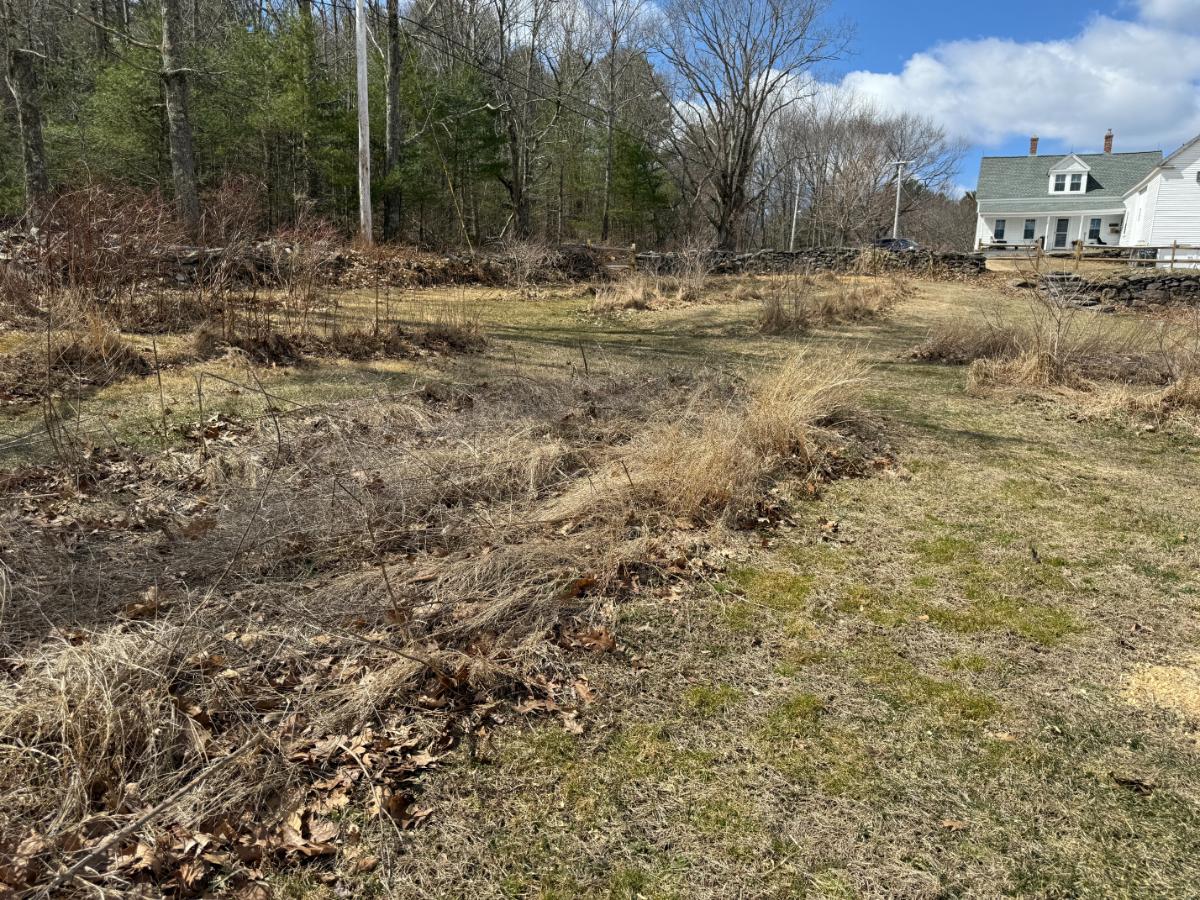
Strawberry plants need full sun to grow and thrive. They need it for strength, immunity, and disease control.
Most importantly, if strawberries don’t get at least six to eight hours of sunlight a day, they will have trouble blossoming and growing berries. Yields will suffer significantly even on the plants that do survive.
So, the first thing you need to look for when choosing a place to plant a new strawberry patch is one that receives six to eight or more hours of daylight.
2. Away from shade-casting buildings or structures
When you go scouting for full-sun spots, keep in mind that what can appear to be full sun at one time of day may not be at others.
When you pick your spot, pay attention to how close it is to buildings, such as a house, shed, or barn. If the sun moves in a way throughout the day that casts a shadow from that building, move the patch far enough away so that it is not a problem.
If the sun moves again and the shadow passes for enough time to allow for enough light again, that’s okay, and you can plant in that space.
3. Away from shade-casting trees
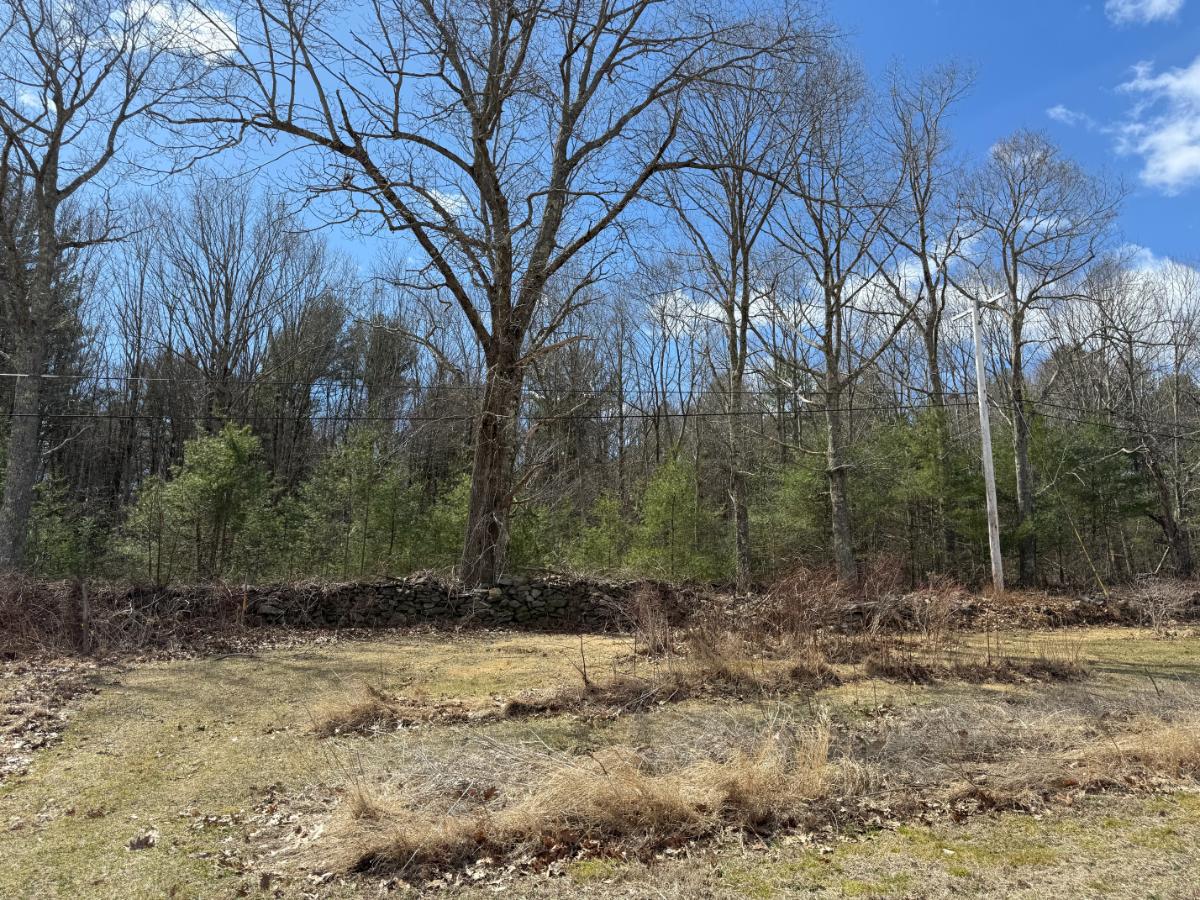
The same goes for trees. Watch the way the sun moves and watch the shadows that are cast from trees throughout the day. If trees block the light for more than a few hours of the day, choose a different place for your strawberries.
Keep in mind that the total hours of light needed to meet the full sun requirement is your goal. That means that, as the sun moves, if trees cast shade for a couple of hours in the morning or afternoon, but then the sun moves past the tree and light falls on the strawberry plants again, you can count all the hours on both ends of the day when the sun was on the berries. Add them all together to come up with a total of six to eight hours of sunlight overall.
If you can meet that, the spot is adequate in terms of light.
4. Outside the root or drip zone of neighboring trees
Trees will cast shade and block sunlight, as we just discussed. They will also compete with your strawberries for moisture and nutrients from the soil.
To reduce and mostly eliminate this competition, plant your strawberries beyond the root zone of the tree.
Obviously, trees have a wide root area underground that you can’t see. But there is an easy way to tell where the root zone basically ends.
- Look up to the top of the tree — the full area where the branches extend out
- This is called the “canopy”
- The roots of the tree go out underground to about the same space as the canopy of the tree
- So, if you estimate where the cover of the canopy ends on the ground, you can estimate where the root zone ends, too
5. Not in poorly draining soils
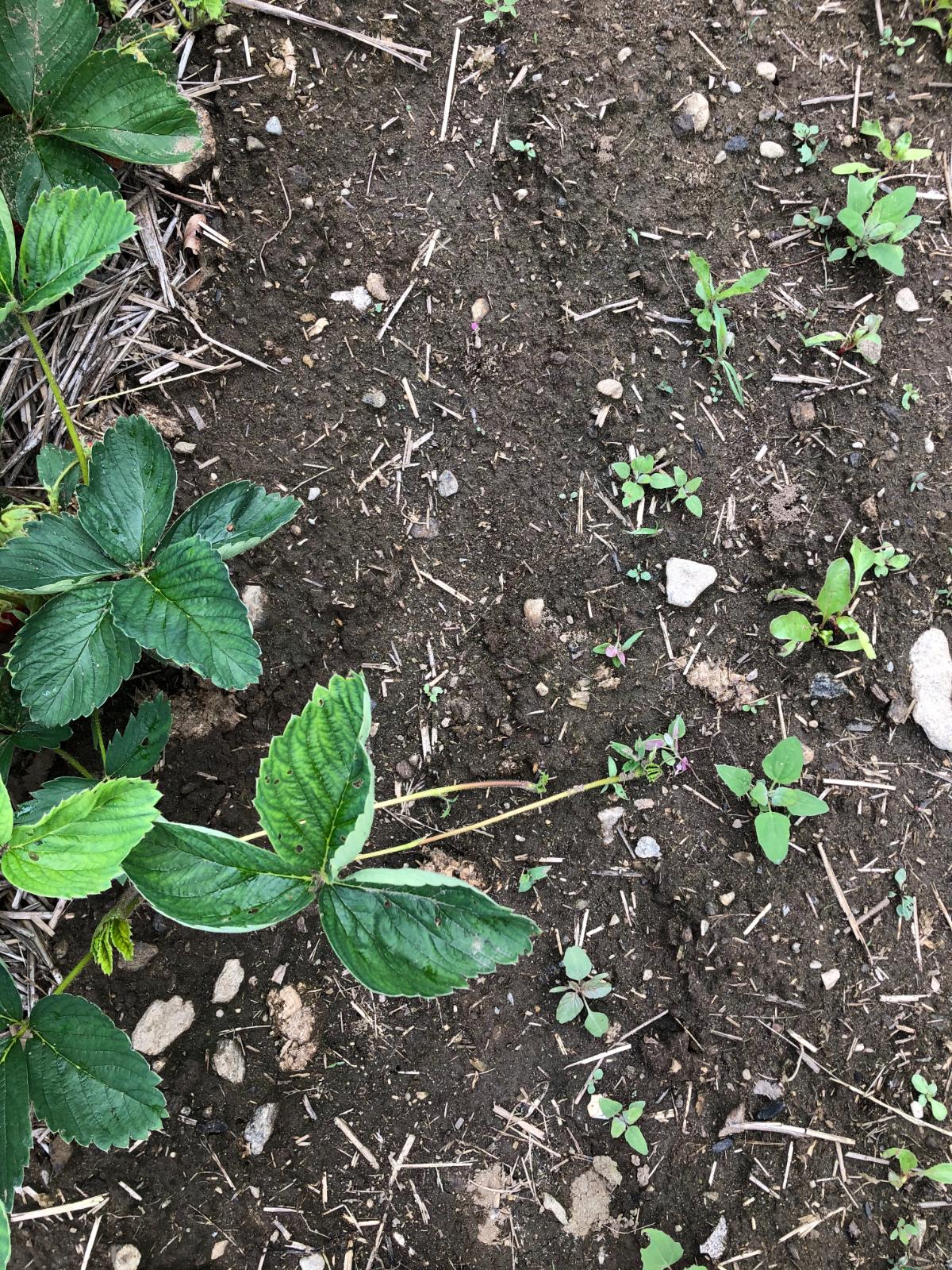
Strawberries cannot tolerate living in poorly draining, wet soils. They fall victim to root rot and fungal diseases. Berries on moist ground mold and rot very quickly.
The best soils for strawberries are deep and loamy, with some sandy content and plenty of organic matter to feed the plants. If your soils are on the heavier or poorly draining side, you can cut sand into the soil and build up organic matter to improve them. This needs to be done before you plant your patch.
6. Not where the soil stays wet for a long time into the spring
Strawberries are one of the first plants to start growing and producing in the spring. They are among the first to be harvested.
That means that they need to be in soils that support their optimal growth, even in the early spring. While annual garden plants have more time for the winter runoff to drain away, strawberries do not have that luxury.
If there are areas of your yard that have standing water later into the spring or that are slow to run off or dry up, do not use those places for planting your strawberry bed.
7. Not where standing water puddles after storms
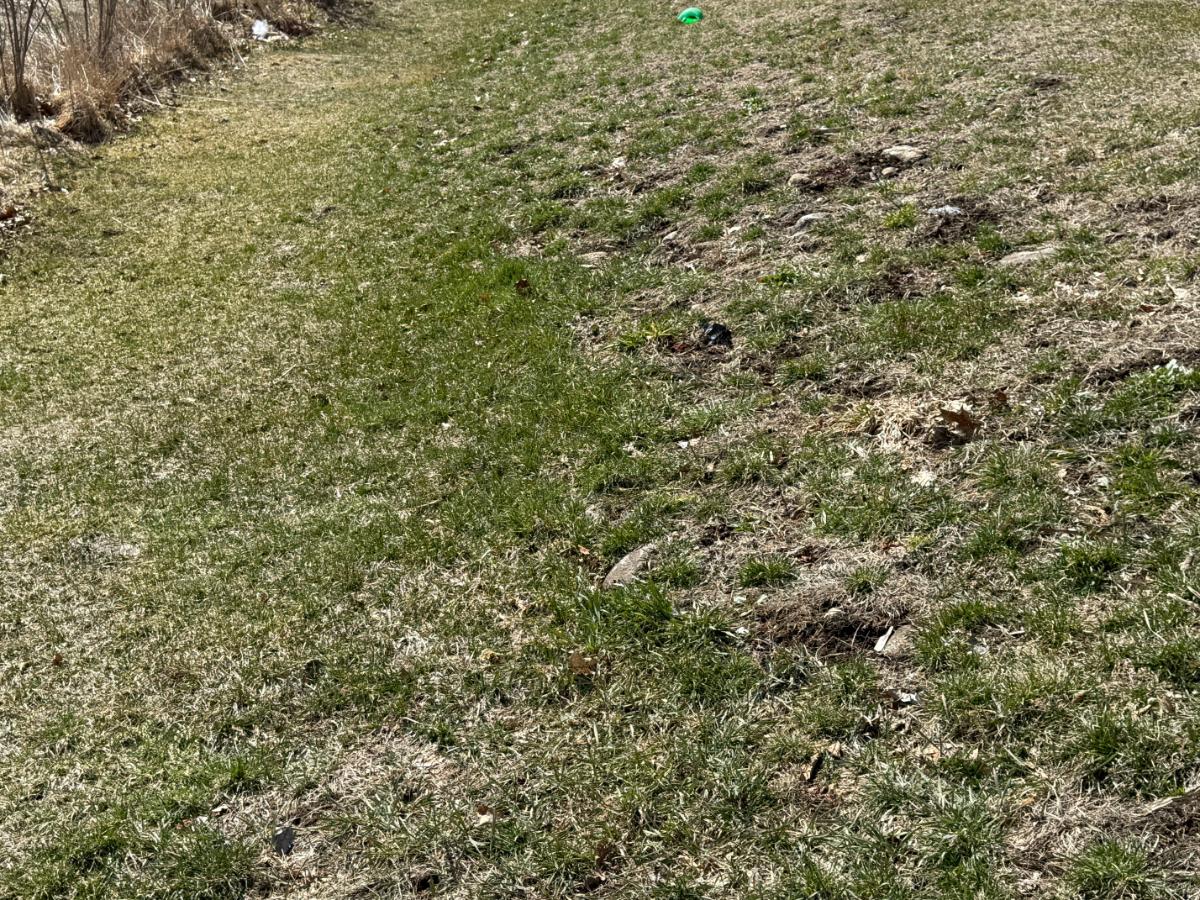
Rain will fall onto every strawberry patch (ideally). But then it needs to go away quickly.
If the ground where you want to plant your patch has standing puddles for any significant period of time after rainfall, don’t plant your strawberries there.
The best scenario is that the water drains as it rains, and there is never any appreciable amount of puddled or standing water. At the very least, the water should be gone within half to one hour. Any more than that, and root rot, fungus, and rotting berries will be a serious problem.
8. Not on low ground if you can avoid it
If at all possible, don’t plant your strawberries on low ground. Find a high spot in your yard, such as a hilltop or hillside, as opposed to the flattened-out spaces of low, bottom ground.
Planting on higher ground will lend added warmth and frost protection. Frost can drain down and away from raised rows or (better yet) strawberries growing on higher ground. It will also reduce the chances of strawberries being flooded by standing water that settles on the low ground.
High ground also provides better air circulation, which is healthier and helps to reduce diseases.
The better the air circulation, the faster the berries and the plant foliage will dry out after rains or heavy dew. This improves berry quality as it reduces mold and fungus infection (on both the plants and the berries).
The gradually sloping ground is a good spot for a strawberry patch. If you don’t have it, you should consider building your rows up into berms or raised beds. (Raised beds don’t need to have frames or sides; you can literally just hoe or shovel up mounded rows.)
If you can’t avoid planting strawberries in low ground on your property, consider planting them in a pyramid or raised beds. This will help to improve the air circulation and hopefully get them up above the frost line. (Though even in raised structures on low ground, some frost protection will be a good idea any time near frost conditions are predicted during the blossoming and growing season.)
9. Not where nightshade plants were planted within the last four years
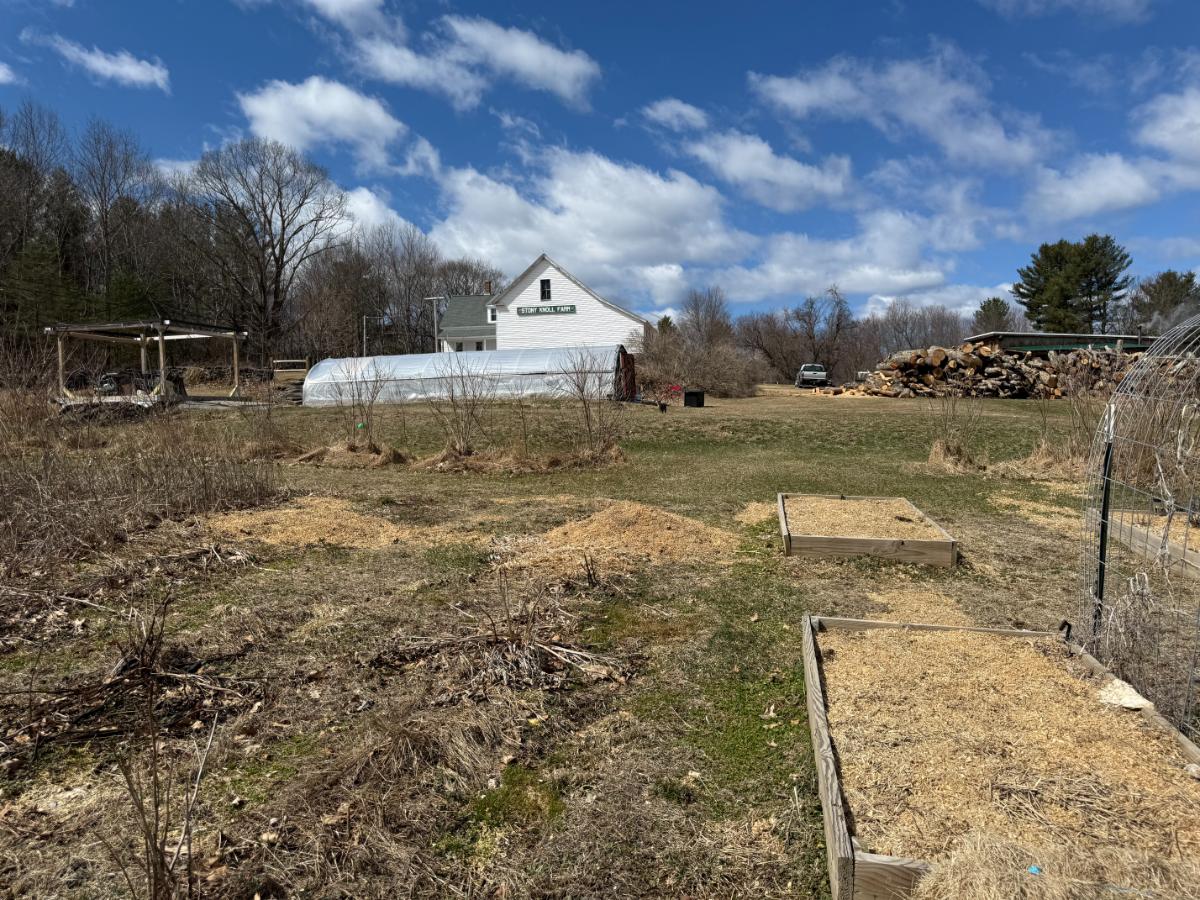
Plants in the nightshade family can be victims of the same kinds of fungal diseases that affect strawberries. Specifically, Verticillium root rot fungus. If the nightshades you grew before had the disease, it will stay in the soil for several years.
Wait at least four years before planting strawberries where nightshades were previously grown. These include common garden and vegetable plants such as
- Tomatoes
- Peppers
- Eggplants
- Potatoes
10. Not where grass or sod was recently plowed under
This can be a difficult one if you are establishing a new strawberry patch on virgin ground or lawn. But as much as you possibly can, avoid planting strawberries where grass or sod has recently been broken or tilled.
You need bare, fresh soil for strawberries to grow well. You are setting the stage for years of growing, and if it starts with grass and weeds, it will quickly become overcome by them.
Weeds, grass, and grubs are the problem in newly broken grassy ground.
Before you plant your strawberry plants, let the tilled grass die. You can cover or solarize it to speed the process, but several weeks and a few rounds of tilling spaced several days or weeks apart should do the job.
Leaving the soil bare and uncovered will give birds several weeks to eat off the grubs. It would be even better to let this happen over an entire season if you can plan far enough ahead, but that is not always reasonable (however, fall tilling for spring planting works very well!).
If you can’t do this, consider a barrier like cardboard over the space, no tilling, and planting in a raised bed instead. The barrier and soil will kill the grass, block grubs, and reduce grass and weed growth caused by churning up the ground.
11. Not where you can’t get water to the strawberry bed
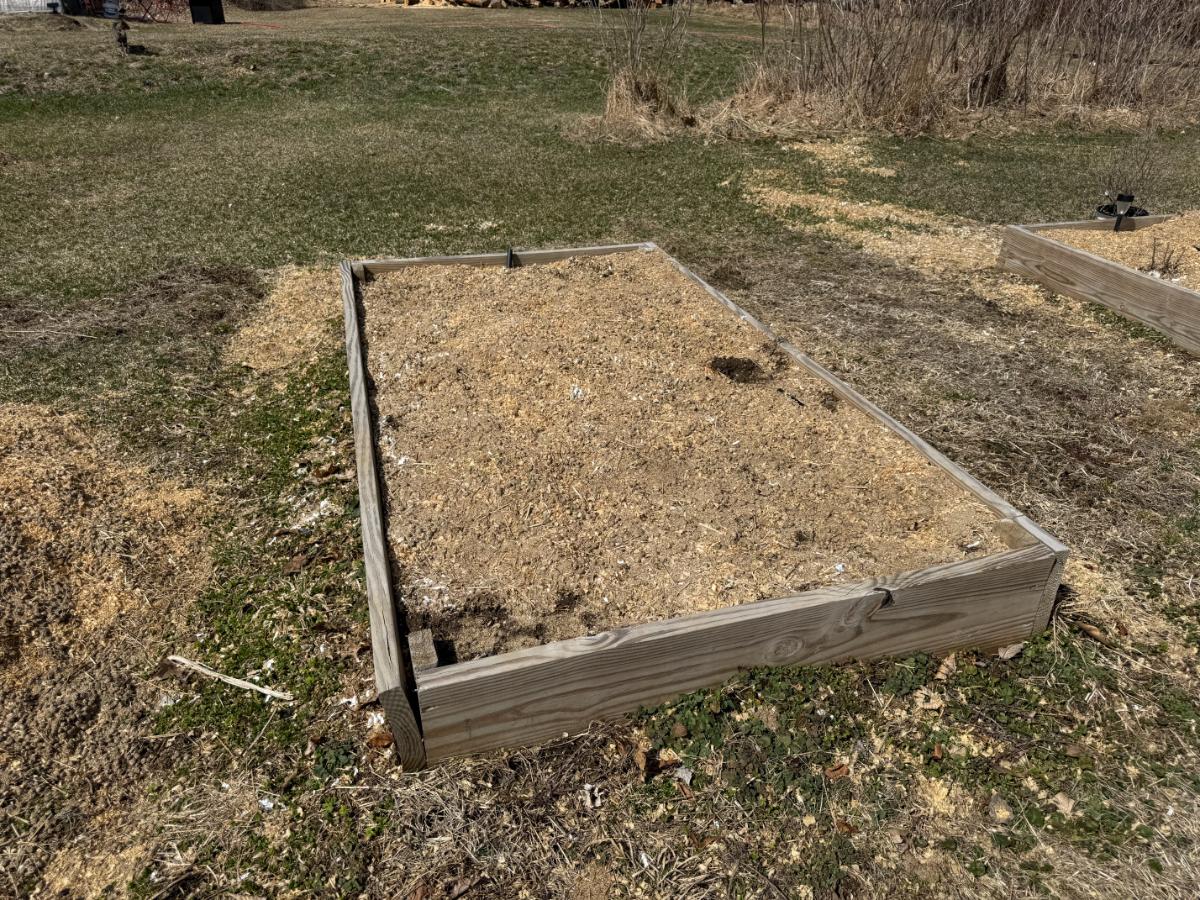
In the event that you aren’t getting enough natural rain (one [1] to one and a half [1 to ½] inches per week), your strawberries will need supplemental water. Keep this in mind when you choose where to plant. Put them in a place where you can get enough water to the patch.
Having access to water, such as sprinklers, can also be beneficial if you end up having a late frost. Running a sprinkler can keep the plants warm enough so the blossoms don’t freeze, which results in no berries.
Pick the Place that’s Best for Your Berries

Just as important as knowing where to plant your strawberry patch is knowing the places and conditions you need to avoid.
A well-planned, well-maintained strawberry patch will give you beautiful berries for three to five years. It’s worth taking the time to pick the right place and set your patch up right!




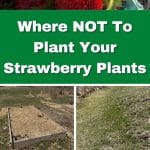
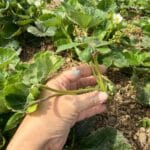



Mike says
How about some info on strawberry plants that are native to the US? I’m talking about ones that are grown to help the pollinators and not for gigantic berries. Something like Fragaria virginiana or Fragaria vesca. These make for great groundcovers that helps the local wildlife and are host plants for moths like the Grizzled Skipper, Smith’s Dart, Purple-Lined Sallow, and Crocus Geometer, and others. They also produce berries that taste great, but they are much smaller than the grocery store ones.